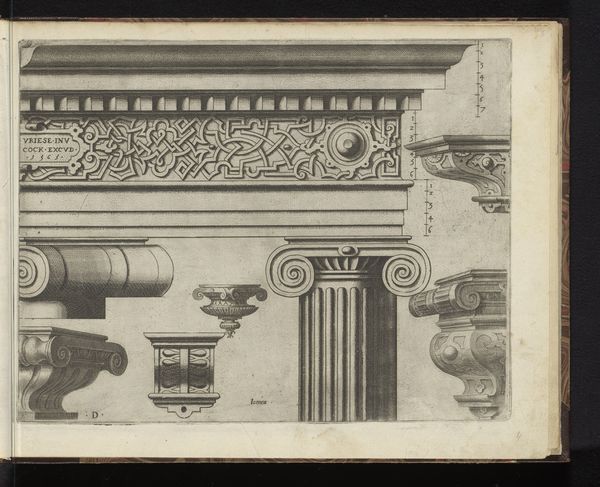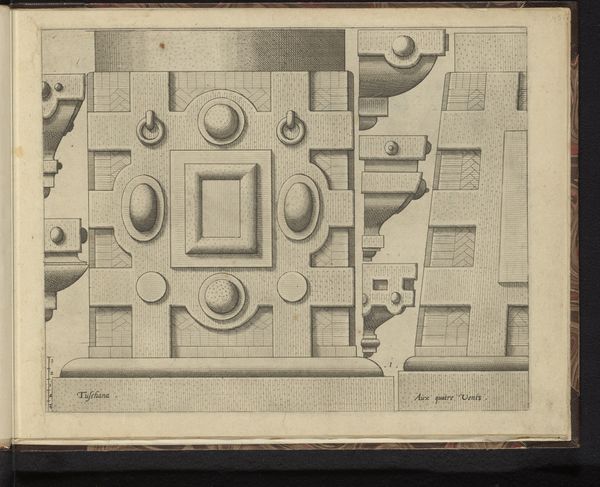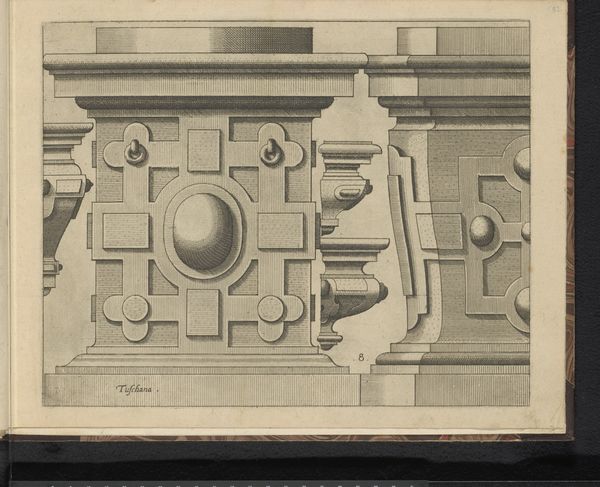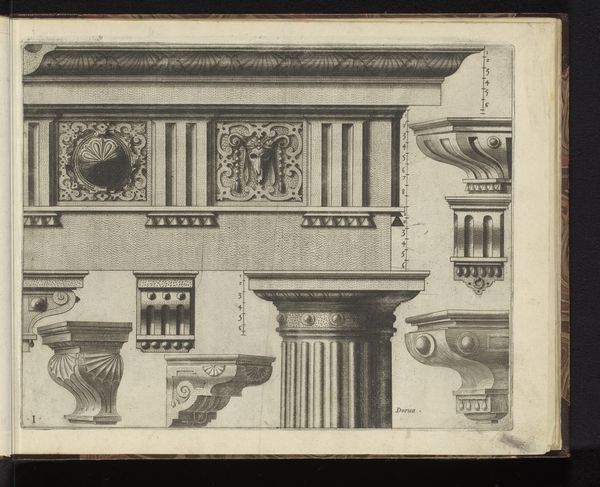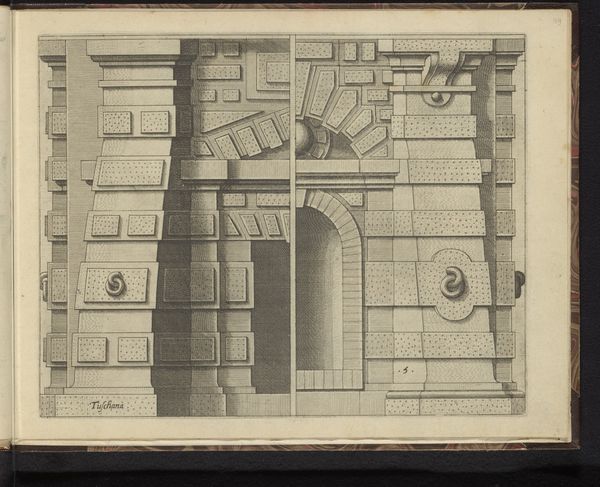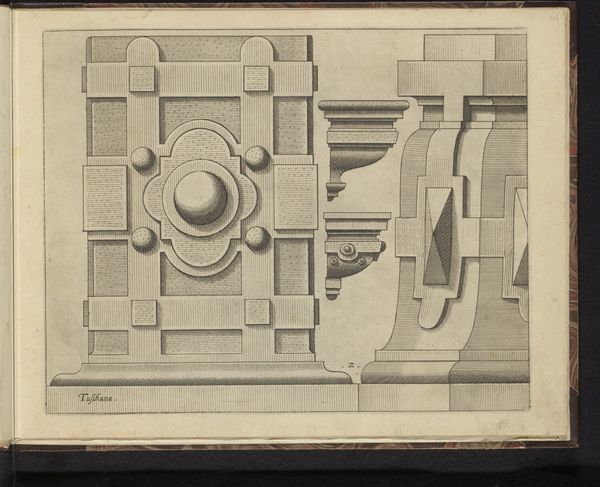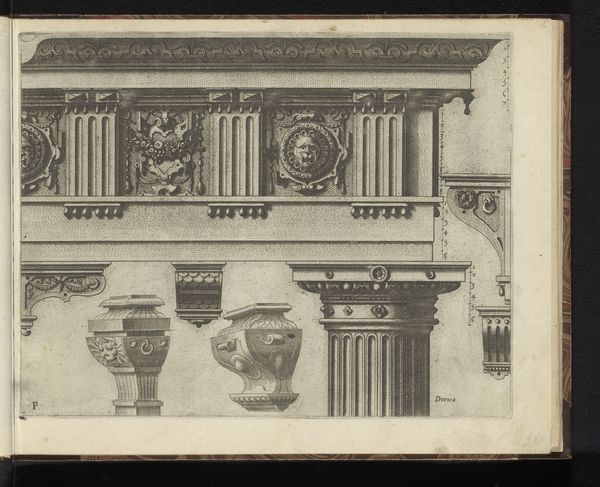
drawing, print, paper, ink, pen, architecture
#
drawing
#
aged paper
#
toned paper
# print
#
old engraving style
#
sketch book
#
paper
#
11_renaissance
#
personal sketchbook
#
ink
#
geometric
#
pen-ink sketch
#
pen and pencil
#
pen work
#
pen
#
academic-art
#
sketchbook art
#
pencil art
#
architecture
Dimensions: height 235 mm, width 301 mm
Copyright: Rijks Museum: Open Domain
This image from the Rijksmuseum is an architectural study of a Doric entablature by Johannes and Lucas van Doetechum. The arrangement of triglyphs and metopes, those alternating rectangular and square spaces, carries with it the weight of ancient Greek ideals of order and harmony. But these forms aren't confined to antiquity. Consider the Renaissance, when artists and architects, driven by a hunger for classical knowledge, revived these very motifs. Observe how the Doric order, initially born from the timber structures of early Greek temples, was reimagined in stone, its forms imbued with new meanings. The repetition of geometric shapes, squares, and rectangles may speak to the human psyche’s innate desire for order, reflecting our attempts to impose structure on the chaotic world. This echo of forms across millennia, from ancient temples to Renaissance palaces, reveals a cyclical pattern of cultural memory. The Doric entablature, therefore, is not just an architectural element, it is a vessel carrying the enduring spirit of human creativity.
Comments
No comments
Be the first to comment and join the conversation on the ultimate creative platform.

